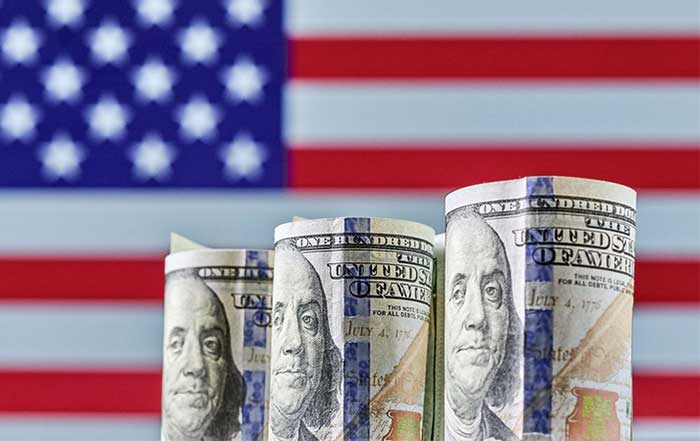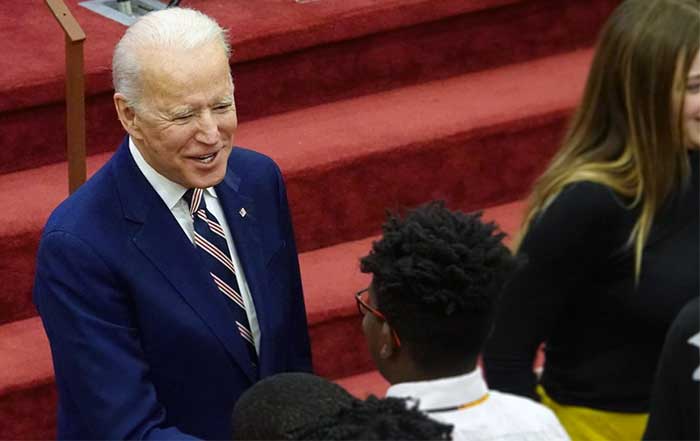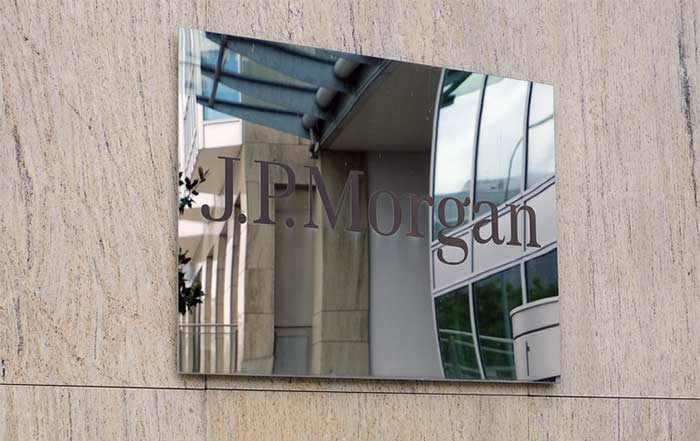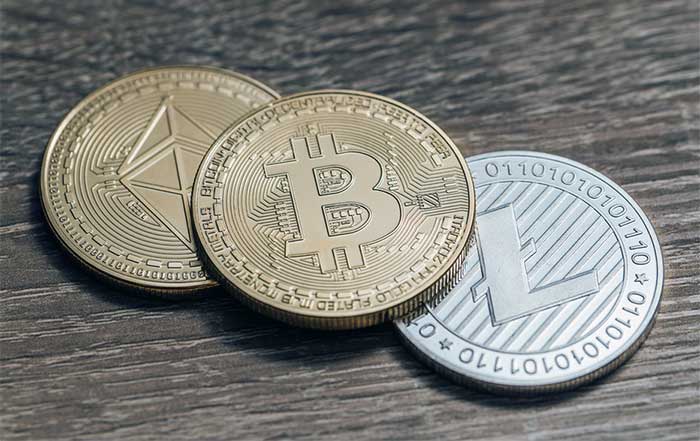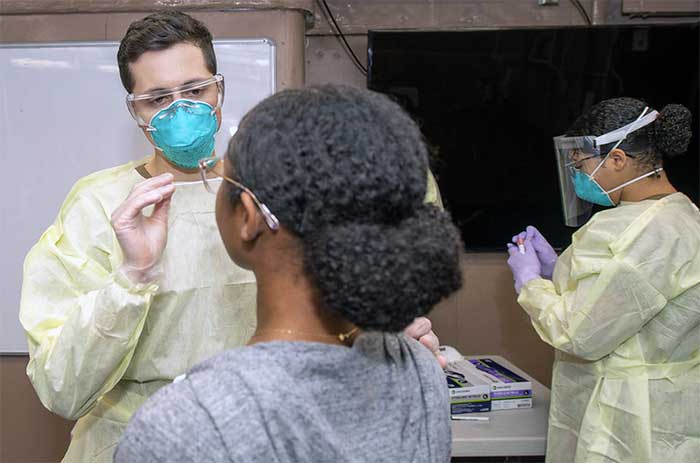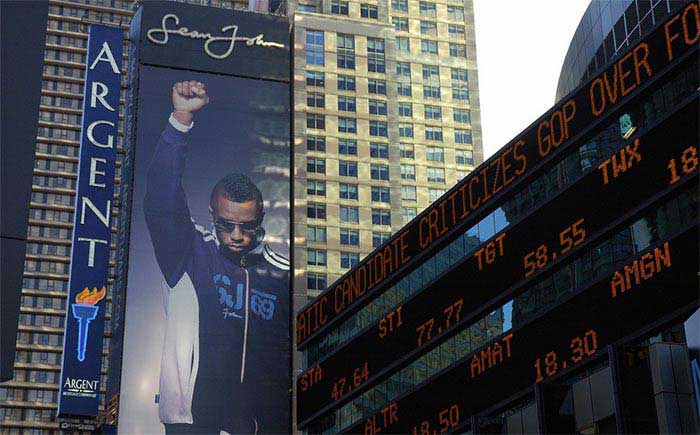The world of work has undergone seismic changes over the last decade, with technology, flexible lifestyles, and economic shifts pushing millions of people to reconsider traditional career paths. In 2025, the appeal of home-based businesses has become stronger than ever, largely because of the low barriers to entry, reduced startup costs, and the growing global acceptance of remote work. For individuals seeking independence, resilience, and the opportunity to leverage their unique skills, home businesses are not only viable but often highly profitable. This article for usa-update.com explores some of the easiest businesses to start from home, highlighting why they resonate with modern professionals, what tools make them scalable, and how global and local trends support their growth.
The New Era of Home-Based Entrepreneurship
The shift toward home-based businesses is not simply a pandemic-era phenomenon. It is the product of multiple converging forces: the rise of cloud technology, the democratization of digital marketing, and the increasing willingness of consumers to trust independent service providers. According to data published by the U.S. Small Business Administration, over half of all small businesses in the United States now begin in someone’s home. With advancements in AI-powered tools, e-commerce platforms, and low-cost digital infrastructure, entrepreneurs no longer need extensive capital or large teams to establish strong revenue streams.
From suburban neighborhoods in California to urban apartments in New York and Chicago, individuals are carving out space—literally and figuratively—to launch ventures that suit their lifestyles. This decentralization of entrepreneurship also mirrors global trends in Europe, Asia, and South America, where governments and communities are encouraging small businesses as engines of growth. The future of business is not just corporate skyscrapers—it is the kitchen tables, home offices, and converted garages of everyday people.
Freelance Services: Leveraging Skills in the Digital Marketplace
Perhaps the most accessible entry point into home entrepreneurship lies in freelance services. Individuals with strong skills in writing, design, consulting, or coding can immediately tap into global demand through platforms such as Upwork, Fiverr, and Toptal. The global freelance economy has become a $1.5 trillion industry, reflecting how businesses from startups to Fortune 500 companies now rely on external contractors for specialized support.
Freelance writing remains one of the most straightforward paths. With a laptop, internet connection, and a portfolio, a writer can serve clients across industries ranging from finance to entertainment. Designers are equally positioned, as companies consistently require logos, branding, and digital media assets. Those with technical expertise in areas like web development, data analytics, or AI integration can command premium rates as businesses continue to expand their digital presence.
This approach requires minimal overhead. Marketing is often as simple as creating a compelling profile on major freelance platforms, networking on LinkedIn, and delivering consistent results. Over time, freelancers can scale their businesses into agencies, hiring subcontractors and expanding services to cover broader markets.
For further context on how freelance work intersects with the broader economy, readers can explore employment trends in the U.S. and how technology continues to shape job opportunities.
E-Commerce and Dropshipping: Selling Without Warehousing
One of the most popular and easiest home-based businesses to start is e-commerce, particularly through dropshipping. This model allows entrepreneurs to sell products online without the need to store inventory. Instead, when a customer makes a purchase, the product is shipped directly from a supplier. Platforms such as Shopify, WooCommerce, and BigCommerce provide ready-made infrastructure for entrepreneurs to build stores in a matter of days.
Dropshipping is attractive because it reduces startup costs and risk. Entrepreneurs can experiment with different product categories—from fashion accessories to home gadgets—without committing to bulk orders. With the right digital marketing strategy, including social media advertising and search engine optimization, it is possible to scale an e-commerce store quickly.
The rise of global logistics networks and payment gateways like PayPal and Stripe has made cross-border selling more seamless. For U.S.-based entrepreneurs, this means being able to access markets in Europe, Asia, and South America without leaving home. However, dropshipping also comes with challenges, such as thin profit margins and reliance on supplier reliability, making brand-building and customer service critical differentiators.
Those interested in the broader implications of e-commerce growth can read more on consumer trends shaping the economy and how technology innovations continue to fuel digital transformation.
🏠 Home Business Decision Tree
What's your primary skill set?
Content Creation and Monetization
The digital content industry has become a powerhouse, and creators today have more options than ever to monetize their work. Starting a content business from home requires little more than a smartphone, camera, or microphone. Entrepreneurs can establish YouTube channels, podcasts, blogs, or social media platforms where they share insights, entertainment, or education.
By 2025, platforms such as YouTube, TikTok, and Spotify have matured into ecosystems where creators can generate sustainable income through ad revenue, sponsorships, affiliate marketing, and paid subscriptions. Niche audiences are particularly lucrative. For example, a channel focused on financial literacy, wellness routines, or home-based fitness can attract sponsors and partnerships that drive revenue far beyond initial expectations.
The democratization of media has turned thousands of individuals into business owners. Unlike traditional businesses, content creation scales through reach rather than geography. A video uploaded in New Jersey can generate revenue from viewers in Singapore, Brazil, or Germany. For individuals willing to be consistent and authentic, content creation remains one of the most powerful home-based ventures.
Learn more about the intersection of content and business by exploring entertainment as a growing industry and how digital platforms contribute to global news consumption.
Online Coaching and Consulting
Another straightforward business to start from home is online coaching or consulting. Professionals with expertise in career development, health and wellness, finance, or marketing can package their knowledge into services that meet demand globally. Tools like Zoom, Microsoft Teams, and Calendly make it simple to organize sessions with clients across time zones.
The coaching industry has exploded, with estimates suggesting it now exceeds $20 billion annually worldwide. Business professionals seek career coaches, individuals pursuing healthier lifestyles turn to fitness and nutrition coaches, and startups frequently hire consultants to navigate regulatory or financial challenges. Unlike freelancing, which often involves delivering tasks, coaching is relationship-driven and often involves recurring client engagements, providing steady income streams.
Importantly, coaching can expand into scalable models such as group workshops, online courses, and subscription-based communities. Platforms like Kajabi and Teachable allow consultants to turn expertise into digital assets that generate passive income. For those in the United States, this industry also benefits from a culture increasingly focused on personal development and professional growth.
For readers seeking broader context, business trends and finance strategies provide insights into why consulting continues to be a cornerstone of entrepreneurship.
Virtual Assistance: Administrative Support from Anywhere
One of the fastest-growing home-based businesses is providing virtual assistant (VA) services. Small businesses, entrepreneurs, and even corporate executives are increasingly outsourcing administrative tasks to independent contractors who work remotely. These tasks range from managing emails and calendars to handling customer service inquiries and basic bookkeeping. With just a computer, stable internet connection, and organizational skills, a person can build a reliable VA business that requires minimal investment to start.
The global VA market has expanded rapidly as companies look for cost-effective ways to manage back-office functions. Platforms such as Belay, Time Etc, and Zirtual connect assistants with clients, while many VAs find work through professional networks like LinkedIn. Some assistants specialize in niche areas such as social media management, project coordination, or real estate support, enabling them to charge higher rates. As businesses continue to emphasize efficiency, the demand for VAs is expected to grow steadily throughout 2025 and beyond.
For readers interested in the intersection of virtual work and career opportunities, further insights can be found by exploring remote employment trends and the wider impact of digital transformation on jobs.
Online Tutoring and Educational Services
Education has been permanently reshaped by digital tools and platforms, creating vast opportunities for entrepreneurs to offer tutoring services online. Students of all ages—from elementary school children to adult learners—seek support in subjects such as mathematics, science, foreign languages, and professional certifications. Tutors no longer need to meet students in person; instead, they can conduct lessons over video calls or deliver pre-recorded learning modules.
Platforms such as VIPKid, Preply, and Chegg Tutors have set the stage for global education markets, but many successful tutors also establish their own branded websites and courses. The advantage of tutoring is its scalability; a professional can start with one-on-one sessions and gradually transition to group classes, digital courses, or subscription learning communities. With the rise of edtech innovations, online tutoring has become not just a job, but a thriving business model that adapts to global demand for lifelong learning.
The relevance of online education in 2025 is especially notable in regions where students seek supplementary support for competitive exams or skill development for professional careers. For example, in Asia and South America, online tutoring continues to expand as internet connectivity improves. Readers can further explore the role of global education by reviewing updates in international trends that affect employment and business development worldwide.
Print-on-Demand Businesses
The print-on-demand (POD) model has created opportunities for artists, designers, and creative entrepreneurs to sell custom products without worrying about inventory or shipping logistics. Using platforms such as Printful, Teespring, or Redbubble, individuals can upload their designs, which are then printed on items such as apparel, mugs, posters, or phone cases whenever a customer places an order.
This business model eliminates the need for upfront investment in stock, making it accessible to anyone with creative flair and marketing skills. Entrepreneurs often build niche stores targeting specific audiences, whether that be motivational apparel for fitness enthusiasts, themed products for gamers, or eco-friendly merchandise for sustainability-conscious buyers. With effective branding and use of social media advertising, POD can grow into a strong home-based business with international reach.
The success of POD also reflects broader consumer preferences for personalized and unique products. In a marketplace dominated by mass production, customers value originality and identity-driven items. For those interested in consumer culture, lifestyle trends shed light on why niche products continue to attract growing audiences.
Affiliate Marketing and Digital Advertising
Affiliate marketing represents one of the most straightforward ways to earn income from home by promoting other companies’ products or services. Entrepreneurs can create blogs, websites, or social media channels focused on specific niches and earn commissions when their audience makes purchases through affiliate links. Large companies such as Amazon Associates, ShareASale, and CJ Affiliate provide structured programs that connect affiliates with products.
What makes affiliate marketing attractive is its potential for passive income. Once content is created and search engine optimization is implemented, it can continue generating revenue without active daily involvement. For example, a blog reviewing technology gadgets can consistently earn commissions as long as readers find value in the reviews. This business is especially appealing to those who enjoy content creation and understand the principles of digital marketing.
In 2025, affiliate marketing has expanded beyond blogs to include influencer-driven campaigns on platforms like Instagram, TikTok, and YouTube. Entrepreneurs who build engaged communities can form partnerships directly with brands, often commanding higher rates than traditional affiliate commissions. To understand how this fits into broader economic activity, see how finance and business innovation shape opportunities in digital markets.
Handmade Crafts and Artisanal Goods
Not every successful home business requires digital platforms or advanced technology. Many entrepreneurs find fulfillment and profit in creating handmade products such as candles, soaps, jewelry, or home décor items. The growing consumer interest in sustainable, locally made, and artisanal goods has created strong demand for unique handcrafted items. Platforms like Etsy, Amazon Handmade, and local craft marketplaces enable artisans to reach customers globally.
This type of business often starts as a hobby and evolves into a commercial venture. With social media marketing and storytelling, artisans can build loyal followings who appreciate authenticity and craftsmanship. While scaling may require balancing production with demand, handmade businesses often carry strong brand identity and customer loyalty compared to mass-market alternatives.
The broader cultural trend toward supporting small businesses and environmentally conscious production underscores the significance of this industry. Readers seeking additional insights can learn more about the role of sustainable consumerism in the economy and how global events influence market demand through news updates.
Subscription Box Services
Subscription box services have become a creative and profitable home-based business model, combining e-commerce with curation. Entrepreneurs design monthly or quarterly boxes filled with products that cater to specific niches—beauty products, fitness gear, gourmet foods, or even eco-friendly household items. Customers value the surprise and discovery element, while businesses benefit from recurring revenue streams.
Launching a subscription box business requires sourcing reliable products, designing appealing packaging, and leveraging marketing channels to reach audiences. Platforms like Cratejoy simplify the operational side, providing infrastructure for managing subscriptions, payments, and customer relationships. The model has proven effective across industries, with both small and large companies capitalizing on consumers’ appetite for personalized experiences.
As subscription services become a staple of modern consumer culture, entrepreneurs can differentiate themselves by focusing on specialized themes or underserved audiences. The success of this model reflects broader global interest in curated, experience-driven consumption.
Social Media Management and Marketing Services
With billions of people worldwide active on platforms such as Facebook, Instagram, TikTok, and LinkedIn, social media has become a cornerstone of modern business strategy. Many small companies lack the time or expertise to manage their online presence effectively, opening opportunities for home-based entrepreneurs to offer social media management services. From creating content calendars and scheduling posts to running paid advertising campaigns and analyzing performance metrics, social media managers play an essential role in brand growth.
Starting this business requires strong communication skills, an understanding of digital marketing trends, and familiarity with tools like Hootsuite, Buffer, or Meta Business Suite. Because most of the work is conducted online, startup costs remain minimal, often limited to software subscriptions and a reliable internet connection. With the right strategy, a solo entrepreneur can build a client roster across multiple industries, eventually scaling into a boutique agency.
The role of digital platforms in business is well documented, and those interested in deeper analysis can explore technology trends and the evolving role of business innovation in shaping how brands connect with global audiences.
Home-Based Food and Catering Ventures
For individuals passionate about cooking or baking, starting a food-related business from home can be both rewarding and profitable. Regulations vary by state and country, but many jurisdictions in the United States allow home-based kitchens to sell certain types of food under "cottage food laws." Entrepreneurs commonly sell baked goods, jams, snacks, or specialty cuisine through local farmers’ markets, online platforms, or subscription meal boxes.
The growing demand for healthier, artisanal, and locally produced food products has expanded opportunities for small culinary ventures. Platforms like DoorDash and Uber Eats have also opened new avenues for home chefs to reach customers directly. Many food entrepreneurs begin by selling within their neighborhoods, gradually expanding to regional markets as brand recognition grows.
While this business requires attention to safety and compliance, the relatively low entry barrier makes it an appealing choice for food lovers. For readers seeking to understand the economic context of small-scale culinary ventures, consumer market updates and local economy trends offer further perspective.
Pet Services and Products
The pet industry has proven remarkably resilient and continues to grow in 2025, driven by the increasing role pets play in households across the United States and globally. Home-based businesses in this sector include pet sitting, grooming, training, and the sale of handmade or customized pet products. The emotional bond people have with their pets makes this a sector where consumers willingly spend on premium services and items.
A home-based pet care business requires limited infrastructure, especially for services such as walking, sitting, or training. Entrepreneurs with space and expertise can also create artisanal pet treats, toys, or accessories, selling them online through platforms like Etsy or locally through pet fairs and shops. With pet ownership rates rising in regions like North America and Europe, these ventures are well positioned for long-term sustainability.
The success of pet businesses ties into broader lifestyle and cultural patterns, offering valuable insights into consumer behavior. Readers can explore more on how evolving lifestyles shape demand by visiting lifestyle-focused insights.
Professional Services: Accounting, Legal, and Regulatory Consulting
For professionals with backgrounds in finance, accounting, or law, launching a consulting practice from home provides an excellent way to monetize expertise. Many small and medium-sized enterprises require support with bookkeeping, tax compliance, contract review, or navigating regulations, but they often cannot afford full-time staff. By operating from home, consultants can deliver these services at competitive rates while maintaining flexibility.
Software like QuickBooks, Xero, and DocuSign simplifies the operational aspects of providing professional services remotely. With digital filing systems and secure video conferencing platforms, sensitive client interactions can now be conducted entirely online. While regulatory knowledge and certifications may be required, the demand for trusted advisors remains strong across industries, especially in times of economic uncertainty.
This field directly intersects with topics of national and global significance. Readers interested in broader developments can review regulatory updates and financial market insights on finance.
Health, Fitness, and Wellness Services
The global wellness economy continues to grow at an impressive pace, with consumers increasingly investing in fitness coaching, mental health support, and holistic wellness practices. Home-based businesses in this sector include virtual yoga classes, personal training, nutrition counseling, meditation coaching, and even the development of digital fitness content.
Technology has enabled these services to thrive. Apps like Zoom, MyFitnessPal, and Trainerize allow professionals to deliver customized programs directly to clients. In addition, entrepreneurs can monetize content through subscription platforms or by building online communities around specific health goals. With the rising importance of preventative healthcare in the United States and abroad, wellness-focused businesses remain among the most promising opportunities for home entrepreneurs.
For broader analysis, see how the health and lifestyle economy intersects with wellness trends shaping the global market in 2025.
Travel Planning and Online Agencies
Despite global uncertainties in past years, the travel industry has rebounded strongly by 2025. Home-based entrepreneurs can capitalize on this recovery by starting travel planning services or online agencies. These businesses help clients design itineraries, book accommodations, and navigate travel logistics, often with a focus on niche markets such as eco-tourism, luxury travel, or adventure holidays.
Digital tools like Expedia Partner Solutions, TravelPerk, and Booking.com Affiliate Programs make it simple to integrate booking systems and earn commissions. Many successful travel planners differentiate themselves by offering specialized expertise, such as unique cultural experiences in Asia, sustainable travel in Europe, or family-friendly packages across North America. Operating from home reduces overhead, allowing entrepreneurs to invest more in marketing and customer engagement.
The travel industry is deeply connected to the broader economy and international relations. Readers can explore more by reviewing travel insights and updates from international markets.
Wrapping Up: Building Sustainable Success from Home
The easiest businesses to start from home in 2025 reflect a convergence of technology, consumer demand, and entrepreneurial spirit. From digital services like freelance work, e-commerce, and social media management to hands-on ventures such as food production, pet care, or handmade crafts, opportunities abound for individuals willing to leverage their skills and creativity. The beauty of home-based entrepreneurship lies in its flexibility—allowing people to begin small, test ideas, and grow organically into established enterprises.
Ultimately, success in these ventures depends less on industry choice and more on execution. Consistency, customer trust, and strategic use of digital tools are the common threads that link today’s thriving home businesses. For those inspired to take the leap, the path to entrepreneurship no longer requires vast resources or corporate backing. It begins right at home, fueled by ambition, resilience, and the possibilities of a global marketplace.

